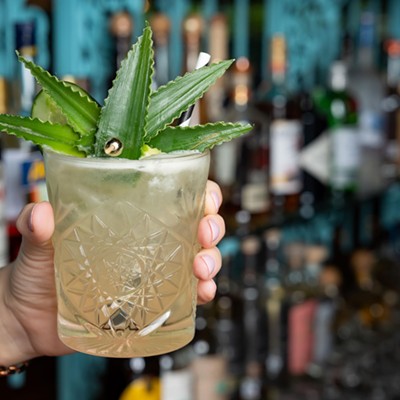To say that Koreans like beef is an understatement. To say that Koreans love their beef as much as Texans do is getting closer. South Koreans eat about 20 pounds of beef per person year, and although that number is much lower than the average U.S. consumption of 60 pounds per person, it's a number that's steadily increasing.
See also: - Here, Eat This: A Beginner's Guide to Indian Cuisine
South Korea imports roughly $500 million of American-raised beef every year, and beef consumption in the country is rising by about 30 percent each year too. Beef is expensive in Korea, as imports usually are, but it's cheaper over here. For this reason alone, Korean food and the Texas landscape pair well together.
There's more to Korean food than just beef, of course, but it's a great jumping off point for Texans eager to explore a cuisine that's exploding on the national scene. Kimchi -- the fermented cabbage that's eaten for breakfast, lunch and dinner in Korea -- has been topping dishes from cheese fries to ramen. The fiery red chile paste called gochujang crops up in dishes like the popular Korean braised goat dumplings at Underbelly. And Korean fusion food can be found across Houston in restaurants such Kobecue and food trucks like Chi'Lantro, Oh My Gogi, Miso Yummy and Coreanos.
But let's start with the basics. Here are a few dishes and drinks to help you build a base for understanding and appreciating Korean food, kicking off with that fermented favorite...
Kimchi
Kimchi is most commonly fermented cabbage -- think of a spicy version of sauerkraut, if the cabbage weren't quite so shredded -- but can actually be made with a variety of other vegetables, such as cucumber and daikon radish. It's Korea's national dish, and can be eaten on its own or as an ingredient in everything from soups to fried rice. Kimchi has a pungent odor, owing to its fermented nature, but tastes quite different. I find it both sweet and spicy, with a briny note underneath that keeps it from being cloying. The crunch and kick of heat from kimchi are addictive -- to me, at least -- and I can justify eating far too much in one sitting with the knowledge that it's really quite healthy: Kimchi contains more than 50 percent of your daily value of Vitamin C, as well as high levels of Vitamin A, Vitamins B1 and B2, calcium, iron and a Lactobacillus that keeps you regular.
Banchan
Snack time! It's not a real Korean meal without banchan, the various side dishes of dizzying variety that are either presented along with your main entrees or offered on a help-yourself-style cart/mini-buffet (depending on the restaurant). Banchan is the Korean version of lagniappe in this way: a little something extra. The most common banchan you'll find delivered to your table include kimchi, various namul dishes and jeon (described in more detail below). The namul are my favorite: bean sprouts, radishes, spinach, seaweed and a wealth of other different vegetables which have typically been steamed or stir-fried with sesame oil, vinegar, garlic, green onions, soy sauce and chile peppers.
Jeon
Jeon are proof that "crisper drawer frittatas" existed long before Good Housekeeping and other magazines made them into a thing. Typically served as part of your banchan array, jeon can consist of nearly any meat or vegetable battered in rice flour and thrown into a hot skillet with some eggs. You know those scallion pancakes you like so much at Chinese restaurants? Imagine those pancakes if they contained kimchi or squash or tofu or liver. You never really know what jeon you're going to get with your banchan spread; the surprise is half the fun.
Gochujang
Do you like Sriracha? Meet its bolder cousin, with a robust swagger that comes from fermentation (yes, more fermentation!) of the chile peppers that make up most of the scarlet paste. Along with ganjang -- a fermented soy sauce -- and a soybean paste called doenjang,gochujang is the most important condiment in Korean cuisine.





